Midwestern Values: How a Pet Food Company Stole Christmas
How A Pet Food Company Stole Christmas Midwestern Pet Foods' aflatoxin recall is on track to become the deadliest pet food recall for aflatoxin poisoning in history
On December 30, 2020, a large group of Americans and their families were brought to tears by an unlikely source: the FDA’s Center for Veterinary Medicine, which issued a pet food recall announcement late that evening for a narrow list of widely distributed Sportmix-brand dog and cat food products. That recall was updated and expanded on Monday, January 11 at about 9:30 pm ET, acknowledging what was already known to those investigating Midwestern Pet Foods, Inc., the parent company and manufacturer of Sportmix. That this recall was not like other recalls.
Jump to Sections
Part I: How A Pet Food Company Stole Christmas
Part II: Patricia Compton’s Dark December
Part III: Stephanie Romero’s Double-Euthanasia Christmas
Part IV: Karen Moureaux’s December to Forget
Part V: Samantha Jones’ Real-Life Frozen
End

Aflatoxin is a by-product of black mold (Aspergillus flavus), pictured here. Infestation often occurs when grains, corn, and nuts are in storage, particularly if there is any moisture. They’re everywhere and “not entirely avoidable,” said the FDA’s January 2018 “Hazard Analysis and Risk-Based Preventive Controls for Food for Animals Guidance for Industry.” Even so, there are screening methods that apparently were not in place at Midwestern.
Patricia Compton, who runs a dog rescue organization out of her home and had 13 dogs die between Dec. 1 and Dec. 29, describes a state of shock in an interview as she recalled the moment she found out what had been killing her dogs. At one point while driving that day, she says she pulled over at a gas station, bought a six-pack of beer, and then continued to drive as she consumed all of the beer because she was hysterical.
Samantha Jones, a Rottweiler breeder who as of last Monday was still losing puppies in a now motherless litter – the litter’s mother, “Regen,” died on December 14, 11 days after the puppies were born – says she went into a panic, telling her family to set fire to the food. “Don’t leave a drop! Get rid of it. Burn it right now,” she says she remembers saying in the minutes after learning about the recall, and why her dogs were sick or dead.
Stephanie Romero started crying, too. “It was me that was poisoning them,’” she sobbed as she recalled the moment the FDA’s announcement appeared on her screen, and she learned that her two four-year-old dogs had died on Christmas day from the food she had been feeding them.
Karen Moureaux, an experienced Border Collie breeder, says the recall helped her find a modicum of peace, but that she remains heartbroken.
“There’s nothing else that could have killed this dog. It just made no sense. It was so heartbreaking and frustrating for him to just die,” she told us, referring to her two-year-old border collie, Jax.“It made no sense. And this makes complete sense,” she added, referring to the FDA’s announcement.
“There’s nothing else that could have killed this dog. It just made no sense. It was so heartbreaking and frustrating for him to just die. It made no sense.”
-Jax’s owner, Karen
22-month-old border collie Jax
“Voluntary” Recall 101
Consumers put stock in labels. Labels can be misleading, however, even when they’re used in FDA Class 1 recalls, defined by the department as: “A situation in which there is a reasonable probability that the use of or exposure to a violative product will cause serious adverse health consequences or death.”
FSMA gives FDA mandatory recall authority
“Under the Food Safety Modernization Act (FSMA), FDA has mandatory recall authority” – Anne Norris, a spokeswoman for the FDA’s Center for Veterinary Medicine said – “if there is reasonable probability that the food is adulterated or misbranded under certain FDA authorities, and that the food could cause serious illnesses or death.” However, she added, “FDA must give the responsible party an opportunity to conduct a voluntary recall [emphasis TCR’s] before ordering a mandatory recall.”
In other words, the companies are afforded the opportunity to “volunteer” to move forward with a recall by regulators.
It is worth noting here – and critical for consumers to appreciate – that in a case where the recall involves products that can cause illness or death, and a company chooses not to “volunteer,” that company risks significantly more legal exposure in a situation where trial lawyers are already placing advertisements on Google to recruit, as clients, any individuals affected by the recalled product.
A mandatory recall takes more time because regulators must undertake complicated, sometimes lengthy legal processes. And, all the while, the products remain on shelves, possibly causing more harm. As demonstrated in cases in which the household has more than one dog, every minute that passed leading up to the recall was a minute that could have saved lives. Thus, in addition to legal exposure considerations, a company almost always ‘volunteers’ to recall and cooperate with the FDA because of the public relations challenges that come with a refusal to cooperate that delays a recall.
“FDA has issued a mandatory recall order of a food product only once,” Norris told TCR. “In April 2018, FDA issued a mandatory recall order for all food products containing powdered kratom manufactured, processed, packed, or held by Triangle Pharmanaturals LLC, after several products were found to contain Salmonella. In two other instances, FDA started down the path of using its mandatory recall authority under FSMA until the companies ultimately chose to voluntarily recall their product.” [Footnote 1]
One of the two other instances in which the FDA began the process of a mandatory recall, it turns out, was pet food-related:
In response to the investigations by State of Colorado and FDA officials,” the FDA said in a 2013 report to Congress, “Kasel conducted several voluntary recalls in the fall of 2012 for specific lots of dog treat products that tested positive for Salmonella. However, Kasel refused to recall all pet treat products manufactured in the facility from April 20, 2012, through September 19, 2012, including one of the finished product samples that tested positive for Salmonella….On February 13, 2013, FDA conducted a follow-up inspection and determined that the firm did implement some corrective actions and therefore an enforcement action, such as a seizure or an injunction, was not required at that time. However, since the pet treat products manufactured in the facility from April 20, 2012, through September 19, 2012, were still on the market and were a potential threat to public health, FDA issued a notification letter to Kasel pursuant to section 423(a) of the FD&C Act. The notification letter provided the firm two business days to inform FDA whether they would conduct the recall voluntarily.
Nobody is suggesting that Midwestern dragged its feet or that the firm has not cooperated with regulators. However, when consumers read “voluntary recall,” they should understand “voluntary” in the context provided here.
Midwestern to set a new death record
This may be a record-breaker in terms of its eventual death toll. Even if we apply the new FDA death count, which stands at “at least 70” as of January 11 – the FDA’s new count does not factor in several of TCR’s cases and, it’s safe to assume that many more have yet to be filed.
Between 2005 and 2006, at least 100 dogs died because they were eating foods that were found to have high levels of aflatoxin. This JAVMA article details the 2005-2006 Diamond Pet Foods aflatoxin recall (see also the Times’ story), which remains the deadliest recall of this kind on record– until the FDA’s current Sportmix death count which now stands at “at least 70” eclipses it, as seems likely.

‘Subject to Change’
As TCR spoke with more affected dog owners in the immediate hours following the initial recall, most with multi-dog households in which the dogs were either deceased or acutely ill, the death count in FDA’s initial announcement, 28, started to seem misleading, at best. We reported that the FDA’s count was likely significantly under the actual death count.
By the evening of Monday, January 11, when the official FDA death count was “at least 70,” the expanded recall announcement included non-Sportmix brands.
There are two reasons why the limited nature of the initial recall – and, even still, the scope of the since-expanded recall — still seems narrow given how difficult it is to detect aflatoxicosis. First, the food was being recalled for aflatoxin contamination, which is always serious with respect to dog food by definition, because dogs are highly sensitive to aflatoxins, more so than most species. Second, it also seems like a shortlist of recalled products given how much was not recalled and given the fact that the company has declined to communicate with members of the media, not to mention affected consumers (beyond requesting and collecting names and telephone numbers), and has not released any information about precisely how or where contamination occurred, and measures being taken to address it.

Midwestern Family Values
Midwestern Pet Foods, Inc. is the company that makes Sportmix, the only brand named in the initial recall. The company also makes Earthborn Holistic, Pro Pac, Wholesomes, and Venture. No mention of these brands appeared anywhere in the initial recall. In the expanded recall, only Pro Pac and Sportmix are listed.
No explanation or clarification has been provided with regard to the basis for the list of products now on the recall list. We can assume that the products on the list are the products about which the FDA has received official complaints and corroborated the information with veterinary records and follow-up. However, many if not most cases are never reported to the FDA, which begs the question of Midwestern: Why not advise owners to discard any product “out of an abundance of caution” (as Midwestern states in its press release)?
FDA spokeswoman Anne Norris has also declined to discuss the process undertaken to determine the death counts in the announcements, as well as what, if anything, the FDA requires animal food facilities as far as aflatoxin screening protocols.
In the announcement issued on Dec. 30, the most important statement might be the disclaimer/acknowledgment that consumers may do well to think more broadly than the narrow list of “lot numbers” expiration dates, or specific flavors: “This is an ongoing investigation. Case counts and the scope of this recall may expand as new information becomes available.”
That part of the announcement was also included in the second announcement, reporting on the 70 deaths. And the investigation is, in fact, ongoing. The second announcement, extending the recall to the company’s Pro Pac brand, also says that the FDA is continuing to conduct “activities” at the facilities currently, which we can take to mean additional inspections, which TCR has already FOIA’ed.
As noted, Sportmix is one of several brands owned and made by Evansville, Indiana-based Midwestern. Its website tagline, “Family-Owned Since 1926” was one of the reasons the dog owners we spoke with found the company so attractive.
Midwestern Pet Foods, Inc. website:
“Over the years, we’ve learned a lot about family, pet companions, trust and making high-quality pet food & treats,” the website promises. “We care about pets, yours and ours, so we never compromise on quality or nutrition. We still have those same Midwestern values that Grandpa Nunn had back in 1926!”
Lab tests of contaminated food reveal aflatoxin levels at 19-26 times the FDA limit
According to the VIN News Service, Dr. David Sikes was the first to alert Missouri state and federal regulators to an issue with Midwestern Inc. products. If today’s Midwestern Pet Food, Inc. values should be regarded as mirroring “Grandpa Nunn’s,” that may not be especially kind to Grandpa Nunn. We won’t know the results of the FDA’s ongoing inspections until our FOIA requests are honored, but we already know from a source who asked not to be named that Dr. Sikes published laboratory test results for affected food samples he submitted in a closed discussion group for veterinarians, and that the aflatoxin levels in the affected food samples he collected from two feed bins in a kennel with desperately sick and dying dogs measured 525 parts per billion (ppb)in one feed bin and 380 (ppb) in the other. The FDA’s legal limit (or actionable threshold) is 20 ppb, which means that the sickened dogs in kennels where Dr. Sikes had been treating patients had been eating food with an aflatoxin level between 19 and 26 times the FDA’s limit.
The notion that this was a minor lapse or that the facility was somehow undertaking the requisite prevention and screening protocols for monitoring aflatoxin levels is ludicrous. Presumably, contamination of this magnitude would have been caught if the firm had been screening.

Midwestern, a private company for which revenues from its dozens of products are not publicly available, has major facilities in Oklahoma and Indiana. The company is staying quiet for now, which may be understandable considering that multiple plaintiff’s attorneys are plastering the Internet with ads targeting people who were affected by the toxic food and sending engagement letters to dog owners, confidently promising no fees unless they recover damages.
Crisis Communications 101
The exception to Midwestern’s radio silence is what appears to be a single, inexperienced, and grammatically challenged person (or bot), “Shawn,” offering almost identical responses to bereaved owners on the company’s social media pages. “Shawn,” an apparent one-person band, has also been fielding emails:
Responding to Jaimie, who assists Samantha with her breeding program, “Shawn” wrote:
“Hello Jaime [works with Samantha, owner of Regen, 2, deceased Rottweiler] we again wish to express our sincere regrets for any issues you have had. In addition to the contact information already requested (you [sic] name address, phone number and best email address) Can you please also provide us with: The formula or recipe you feed your pet (s)? The date code on your bag of food? When your pet experienced the issue? Have you visited or contacted a veterinarian? If so, please provide their contact information and/or a copy of their bill. Thank you, Shawn Sportmix Consumer Affairs” [no last name, no phone number]
On the company’s Facebook page, “Shawn” does not appear to be winning many hearts and minds either.
Midwestern’s Response
Jeffrey Nunn, the president and CEO of Midwestern Pet Foods, Inc., has declined multiple email requests for comment from TCR. Nunn did not respond when asked what, if any, preventive measures, including screening protocols, for aflatoxin levels are currently in place at Midwestern facilities.
Mr. Nunn also did not respond to multiple emails seeking comment about the individual cases discussed in this story, including Patricia Compton’s loss of 13 dogs between Dec. 1 and Dec. 29.
Part II: Patricia Compton's Dark December
“In God’s name I ask for mercy on this Christmas Eve for an answer to what’s killing my dogs. I am waiting on necropsy results from the two that passed last Friday. Eleven so far have passed. I thought it was over but yet just now I see Miss Weirdos gums have turned yellow….This is a mysterious thing killing my dogs….I pray this death stops”
Patricia, writing on Facebook 24 December 2020
Patricia Compton lives in Goliad, Texas, (a little more than three hours from the Mexican border) where she says she has been rescuing, rehabilitating, and successfully adopting out dogs nobody else wanted to families and homes she cherry-picks, many of them in the northeast. She is so well known in the area, she explains, that by December she was caring for 46 dogs and had started to feel overwhelmed by the numbers of people, families, and even local police regularly asking her to take in a dog. This, Patricia says, led to her decision to take down her rescue group’s website.
“Luna” the puppy was the first to die on December 1, she says, followed about 24 hours later by “Stormy” the puppy on December 2. “Gumbo Girl,” a three-year-old brindle plot hound mix was the first adult to pass, dying on December 9. “She’s the one that bled out the most and screamed in pain leaving pools of blood and giant clots from both ends all down my hallway and walls,” Patricia says. “I got her to the vet and euthanized her.”
Although December marked the start of the deaths, the nightmare technically began a few days before Thanksgiving, Patricia says. “I remember Thanksgiving Day, my Husky pup [Luna] suddenly just wouldn’t eat,” she says. This was the beginning.
Between December 1 through December 29, Patricia watched helplessly as thirteen of the dogs living in her home suffered seizures, internal bleeding, and protracted pain after which they died.
The veterinarian she trusts most, Dr. Mark Besancon at Crossroads Veterinary Clinic in Victoria, Texas (a 40-minute drive from her home), whom she calls “Dr. Mark,” put Luna on fluids and tested for what typically causes illnesses in puppies: parasites, Parvo, and Distemper. Dr. Mark found that Luna had hookworms, and assumed that the hookworms had to be the cause of her loss of appetite. It was decided to have Luna stay at the clinic overnight and to keep her on fluids. Instead, she died overnight. Patricia says she learned about Luna when she raced back to the clinic for opening time (at 7:30 a.m.) with another puppy in the litter, Stormy.
The night Luna passed while she was at the clinic, Stormy, another puppy in the litter, suddenly fell ill.
“I go into the living room and there she is, laying in blood, just, just screaming in pain and having seizures.…Her whole body was twisted. She’s vomiting blood. She’s got blood coming out of her and all the dogs were freaked out…I’m like, what the hell?”
Patricia says she wrapped Stormy in a blanket and rushed her to Dr. Mark early the next morning. “I didn’t know that the first had died until I brought the second one in, “bleeding out.” Patricia continues:
“Dr. Mark comes in and he goes, ‘Patricia, do you have any poison around? We’ve got her [Stormy] on fluids.’” Stormy died that day. Patricia recalls that Dr. Mark said that he was certain that the dogs had ingested something toxic, but what it was exactly, he could not say.
Dogs that survived against all odds, poisoned to death by food
After Patricia’s dogs had survived abandonment, starvation, and physical abuse, the healthy, rehabilitated dogs never made it to their forever families in Massachusetts, Connecticut, or New York. Many were due to leave for their adoptive homes days after they passed on. Most of the dogs suffered excruciating pain in their final hours because of the nature of what Patricia was unknowingly battling: “fatal levels of aflatoxin” in contaminated Sportmix dry dog food she had been feeding her dogs for over a decade. Aflatoxicosis offers few if any early warnings before striking a young, healthy, active dog within hours of when a dog was seen playing happily, eating voraciously, eyes bright.
Patricia says she tried to figure out the signs, even as she tried desperately to figure out the cause itself. Yet she could never predict if, when, and where death would strike next, and because a dog could be healthy and happy one hour and convulsing while bleeding out the next, she was often unable to get a dog to Dr. Mark, quickly enough to be euthanized before the dog suffered.
Dr. Mark, she says, told her that he was certain that the dogs that had died were ingesting poison, but could not determine the source.
Dr. Mark has not yet returned TCR’s requests for comment.
Tearing her life apart
Patricia tore apart furniture, plants, cushions, wracking her brain and turning her life upside down in search of what her veterinarian was certain was some type of poisoning. She consulted biologists, wondering about toxic algae on her property. She suspected a tree with date palms in her backyard might be the culprit. Perhaps the water feeding into the tree was contaminated, and the dogs were being poisoned. She wondered if the deaths were from ammonia poisoning caused by her carelessness in not being adequately careful about where precisely she hosed the urine off the dogs’ relief pads in the backyard. She wondered about mice. She started to suspect her neighbor, one rumored to have poisoned cats, and wondered if someone was trying to hurt her dogs.
For the nearly two and a half hours that Patricia spoke with TCR, her remaining 33 dogs (there were 46 dogs before December) were audibly displeased by the lack of attention they were receiving from her.
“It’s like they’re on crack, right?” says Patricia. Patricia says she suspects the surviving dogs are traumatized after witnessing the gory death of so many members of the pack. At several points in our interview, Patricia notes that despite the inconvenience of trying to hear herself above the cacophony of yowls, play barks, whines, yelps, barks, and the occasional snarl, she prefers things this way, with “the constant noise” to the silence that plagued her in December. “The noise is good,” she says. “I’d much rather have this,” Patricia says she hopes it’s over, but notes seeing blood on Monday morning. “Somebody is bleeding, somebody is losing blood,” she says. Everyone is eating voraciously, so Patricia says she isn’t panicking. “The thing about this thing is it can change in the day. It can change in the hour.”
Death Continued
Jacko, Old Man Ghost, and Chickasaw all died on December 10, Patricia recalls. Jacko was a black Labrador pit mix and “was already showing signs and bleeding large quantities of blood in poo.” Old Man Ghost, at 12, was the oldest, having survived a coma after being found alone with his deceased owner. “I took him in. He was showing the same signs as Jacko. Also taking his last breath on December 10 was Chickasaw, a two-year-old heeler hound mix. “Same as Jacko and Old Man Ghost,” Patricia says. “All three had stopped eating days earlier.”
Four days passed without any death, and Patricia says she grew optimistic that whatever had been causing her dogs to die so suddenly and violently was no more. Then, Howie, a six-months-old hound mix, “died here at the house” on December 14 at 8:48 a.m., Patricia noted.
Alfie, six years old, died at the vet’s office on December 14. “His liver was already gone so I elected euthanasia,” Patricia says, adding, “He had stopped eating for days before and projectile vomiting.”
Electra, a six-month-old wheat-colored hound mix and Howie’s sister was next. “She had only stopped eating a day before, but that morning, she walked in from the backyard into the house and went in circles; then, fell over with a blank stare.” Patricia raced Electra to Dr. Mark. “She was dead by arrival,” Patricia says.
When the vet is unable to diagnose or treat
Patricia’s case is unique because her nightmare is a recurring nightmare. It begs the question, what was going through Dr. Mark’s mind? (We’re still efforting that interview.)
When another eight more dogs died in the exact same way as the others before, Patricia says Dr. Mark encouraged her to have the dogs necropsied (the veterinary version of an autopsy), which she did. However, she would not get the necropsy reports back until after she found out about the recall. Note: Following publication, TCR has requested permission to review the reports; Patricia says neither she nor Dr. Mark had the reports on hand; as of press time.
According to Patricia, when the ninth dog, Electra, passed, Dr. Mark insisted that she have necropsies (the veterinary version of an autopsy) performed. Whether and when Dr. Mark advised that Patricia consult a specialist is unknown, not having spoken with Dr. Mark as of press time. Still, unlike many of the other cases involving one or two dogs, untimely and cannot be explained, Patricia’s (or Dr. Mark’s) case was slightly smaller but similar to the situation in which Dr. Sikes found himself: With large groups of sick dogs, each group from the same place, all eating the same food. To be clear, nobody is suggesting that Dr. Mark is to blame for what happened to Patricia’s dogs or that he should have known that food was the cause.
However, one should assume that because Patricia’s case involved so many dogs and because the same symptoms, same presentation, same a lot of things kept cycling, Dr. Mark reached out to colleagues, asked for help, and strongly encouraged Patricia to consult specialists, assuming emergence and specialized veterinary care was accessible.
The reason we should presume that Dr. Mark asked for help and/or strongly advised Patricia to consult with a referring specialist is because the American Animal Hospital Association’s referral guidelines indicate that a veterinarian should ask for help and engage colleagues when faced with ‘head-scratchers’ (in which a veterinarian is unable to figure something out). Based on AAHA’s guidelines, Patricia’s case indisputably meets the criteria for a case in which the attending veterinarian should be asking for help:
Another AAHA document on preventative medicine indicates that a nutritional assessment of every patient is a critical component of good medical practice.
We know that Dr. David Sikes understood this because he tuned in to what the sick and dying dogs were eating, which is what alerted regulators to the recall.
After the two dogs were sent to A&M for necropsies, more of Patricia’s dogs continued to die.
“As soon as she took her last breath, she completely bled out”
Three more died, the last of which and last (as of press time) to go was “Polly,” who died on December 29th at 6:36 p.m. “Polly,” she says, a snow white-colored Collie mix, “came from a meth house. I rescued her…She was afraid of everything. I think she got into meth from the meth house she came from. She wasn’t right in the head, but she was a sweet girl. She was afraid of so many things.” Patricia says the first sign Poly gave was when she stopped eating. “I tried to feed her straight chicken. She wouldn’t eat chicken. She wouldn’t eat anything. I looked at her gums and they were turning yellow and her eyeballs were turning yellow.” Patricia says she knew that Polly was going to die and since it was the weekend before New Year’s Eve, she tried to keep Polly comfortable. “I just tried to keep her comfortable…And then she seemed to be pinker [in her gums], but then the next day they were yellow again. And then she started having that same look in her eyes.” Polly died that evening, December 29, the last of Patricia’s dogs to pass away.

We sat outside in the drizzle while she died. Oh my God, me and her and all the rest of the dogs, they knew, they knew. We all sat around her, and I held her paws. She was scared of her own shadow…That look on her face and then she just sat down and she lost all control of her legs…. Then I just sat with her and it took about maybe two hours. It took a long time for her to take her last breath that she finally did. And then as soon as she took her last breath, she completely bled out.” Patricia added, “it was as if her body burst and bled out.”
“Patricia, have you seen this?”
Asked about when and how she learned about the recall and that the dogs’ food had been the problem, Patricia says: “It was 5 am,” when a message came through her computer: “Patricia, have you seen this?” She was leaving early that morning to take two dogs that had been living in a foster home nearby (and, thus, had not been eating the food and were not sick) to transport them to their new homes. A doctor and friend in Canada who adopted from her years ago had sent her the message through Facebook–with a link to the FDA announcement.
“She remembered that I fed Sportmix,” Patricia says. “Every time people adopt for me, they say, ‘what do you feed them? I’ve been using Sportmix for 15 years, at least. And never had a problem.”
“I just need to drink the beer and cry”
“I have to get ready. I have to get on the road. And so, because I had to leave here at 8:00 AM to get those puppies up to where they needed to go. And so, I’ve had no sleep. I’m exhausted, I’m stressed. And now I know the answer. And I’m trying to hold it together.” After she handed the puppies off, Patricia says she stopped at a gas station, bought a six-pack, “and I just drank the entire drive home.”
“It’s not like I was drunk,” she added. “I just needed a drink and I don’t even drink beer anymore. I just need to drink the beer and cry. I was a zombie.”
I got home. I couldn’t even function. I just cried and drank.” Patricia says she was in a state of shock. “But relieved. I was relieved to know what the hell it was.”
Patricia says the explanation has brought her much needed relief. On the other hand, “I’m still trying to get the blood off the walls. I’m still scrubbing the floors. I’m not up to the speed of this. I’m still just trying to get my dogs sorted out.”
Part III: Stephanie Romero’s Double-Euthanasia Christmas Olive (Lab mix, 4), Scotty (miniature Dachshund, 4)
Stephanie Romero’s two four-year-old dogs “Scotty” (miniature dachshund) and “Olive” (Labrador mix) died “literally within half an hour of each other” on Christmas day, she told TCR in a telephone interview. Both perished after eating the same Sportmix dog food, which is now one of the brands that is part of a ballooning FDA recall.
On Christmas morning, Stephanie says she found Olive having a seizure – not something that had ever happened before, she says – in the crate she shares with Scotty. “Scotty didn’t look too good that morning either. He was really jaundiced, lethargic – they just weren’t themselves,” she recalls. At around noon, Stephanie says, Olive had another seizure, at which point she tried to reach her general practice veterinarian, Dr. Terry Jantzen, who answered Stephanie’s call on Christmas day and agreed to meet her at his clinic, which was otherwise closed.
(Note: Dr. Jantzen was not given permission by Stephanie to speak about Stephanie’s records despite a request by TCR to review relevant records. Thus, Dr. Jantzen was not at liberty to offer his own account of what was said, meaning TCR was not able to cross-check Stephanie’s story, which is our standard protocol whenever someone is referring to another person at length in an interview, and especially if the content goes to the substance of what’s being reported.)
Stephanie says Dr. Jantzen examined Olive and appeared puzzled. Dr. Jantzen, she recalls, assessed that “it seems like she’s got some type of poisoning. I’m not sure what it is or what she got into.” As with all of the other owners who are now known to have fallen victim to the Sportmix food with whom TCR spoke, Stephanie’s veterinarian was certain that Olive had been poisoned, but was at a loss for a source. Next, Stephanie says Dr. Jantzen told her, “The probability of her surviving is very low” and recommended euthanasia. “I had to make the decision with my son, who is 11-years-old, to put his dog down,” she says.
Stephanie says that when she arrived home, understandably in shock, after euthanizing Olive and, then, filling out paperwork for her to be cremated, she found a puddle of dark blood next to Scotty. She says she rushed Scotty to Dr. Jantzen’s clinic. “Luckily, he was still there,” she says. Dr. Jantzen started to examine Scotty and then, told her that he was bleeding internally. “He’s not going to survive and he’s suffering,” Stephanie recalls being told by Dr. Jantzen. As Stephanie recalls details of the day, she is audibly sobbing. “So, I ended up having to put that dog down as well.”
When she asked Dr. Jantzen what he thought could have happened, Stephanie says he told her he was sure it was some kind of poisoning. The dogs, she says, “presented a little bit differently. Scotty’s abdomen was really distended and he was bloated.” Olive, however, was “very skinny, really, really jaundiced. She had an accident in the house that morning, which she never, ever, ever—an accident in the house is an older dog or a puppy in training.” Stephanie added that Olive’s urine appeared almost like orange juice.
Stephanie explained that for the next several days, she had no idea what could have happened to her dogs, racked her brain over what they may have played in that day or ingested.
“Oh my God, that’s what I feed my dogs!’” Stephanie triple checked the packaging and “sure enough, what’s on the FDA recall was the packaging I have for my dogs. I started crying, and I was like, ‘it was me that was poisoning them.”
“A few days later,” she says, she saw the Sportmix recall announcement appear on her computer screen. “I see an article from the FDA recalling Sportmix dog food. And I’m like, ‘Oh my God, that’s what I feed my dogs!’” Stephanie triple checked the packaging and “sure enough, what’s on the FDA recall was the packaging I have for my dogs. I started crying, and I was like, ‘it was me that was poisoning them.”
When she called Dr. Jantzen, she says his reaction was, “That makes total sense.”
Part IV: Karen Moureaux's December to Forget

Border collie Jax, 2, had no health conditions when he suddenly fell ill. His owner, an experienced AKC Breeder of Merit, rushed Jax to an AAHA-accredited, 24/7 emergency/specialty/referral hospital where he received first-tier medical care. He passed one day later on Dec. 10.[/caption]
In the worst situation, Karen Moureaux, who first appeared in our earlier story about this recall, did something that may prove helpful to all of us: Karen not only brought her two-year-old Border Collie, Jax, to a 24/7 specialty/emergency hospital but ordered a large volume of lab work (records and insights from vets in our next story).
On December 8 of last month, Jax went from wolfing down five cups of Sportmix a day to refusing the food, Karen told TCR.
Jax had just undergone an extensive wellness exam and received a clean bill of health because, Karen said, the dog was so wonderful that she was interested in breeding him, which is why he had come to live with her at the age of 2. In fact, the only reason Jax was eating Sportmix was because he had recently come to live with Karen and had been eating the food at his breeder’s home. Karen was always planning to transition him off Sportmix, but Jax died before she had the chance.
After the sudden loss of appetite on the evening of December 8, Karen says Jax also missed breakfast the following day, and wouldn’t eat on Wednesday night. “I checked his gums, they were pale and cold. I took his temperature, and it was 99.2, which is low for a dog. And then I took him to the emergency vet.”
The Veterinary Specialty and Emergency Center in Thousand Oaks, California (VSEC), including Lindsay Tangeman, a board-certified veterinary internist, declined to discuss Jax’s records, citing a policy of not discussing patients with any individual other than the client, even with the client’s consent. However, based on notes and records provided by Karen, Dr. Tangeman was all but certain that Jax had been sickened by a toxin. She wrote in her notes: “At this time, I am concerned for some type of ingested toxin causing acute liver and kidney injury with pancreatitis and gastroenteritis.”
Part V: Samantha Jones's Real-Life 'Frozen'
Samantha Jones and her husband, Gabe, have five children between them. 18-year-old Travis and 15-year-old AnnaBell were the first to notice that Regen was sick, only hours before she was rushed to the hospital and pronounced dead.
Adding to the fact that Samantha and her family are now struggling to keep a motherless litter of now-down-to-seven Rottweiler puppies alive, Samantha says her now-deceased dog is being kept from her by the veterinary practice where she passed “in a bag in a freezer” because of an outstanding balance she says she cannot pay.
The Jones’s 2-year-old Rottweiler Regen had been eating Sportmix throughout her life, pregnancy, and while nursing her pups. About two weeks after Regen died, the FDA announced a recall, citing at least 28 (now at least 70) dog deaths from the food Regen had been eating.

The Jones’ breed rottweilers in Rock Island, Tennessee.
On December 14, 2-year-old Regen, mom to 11-day-old puppies, collapsed without symptoms other than appearing mildly lethargic with some loss of appetite the night before. Regen was rushed to a local veterinarian, Bluegrass Veterinary Clinic in Sparta, TN, where she was soon pronounced dead by Dr. Kristin Edds.
Dr. Edds declined to speak about the facts of Regen’s case through an assistant, citing the Jones’ outstanding balance and advising that TCR schedule and pay for a clinical visit if we wished to discuss the sudden, untimely death of a dog that was eating food named in a national recall.
Asked how Regen’s puppies were doing, Samantha wrote, referring to the colors of the ribbon on each puppy: “Silver girl passed Monday evening. Blue boy passed Monday morning.” Dr. Amy Everett, Samantha’s GP, who is not the doctor withholding Samantha’s deceased dog, “is a lifesaver. Advice-giving Monday saved the rest of the puppies in my op” she wrote in a text message.
Like Patricia, Samantha was almost religious about Sportmix and thought Midwestern Pet Foods was the image of a ‘Mom and Pop’ family-owned, relatively small-scale shop.
End
Indeed, apart from Karen – Jax was eating the contaminated food when she adopted him in early November; he was the only dog in her home eating the toxic food – the owners we spoke with had all been longtime customers of Midwestern and believed in the brand and the company. Samantha, the rottweiler breeder, even noted that clients should feed puppies Sportmix in her contract.
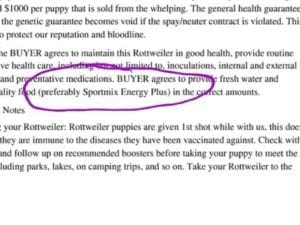
Stephanie, Samantha, and Patricia had been feeding their dogs what they say they believed was the best possible diet. They believed in the company that made the food. And perhaps they believed in the regulators – the FDA, the arm of the Health and Human Services Department where the buck supposedly stops when it comes to assuring the safety of human and animal foods and drugs – that are sold to American consumers.
Editor’s Note: Special thanks to the owners who bravely relived some of the worst moments of their lives, pored over medical records, photographs, and offered vivid accounts of what they, their families, and their beloved animals experienced, largely because they want the suffering their dogs endured in their final hours not to be in vain, but to help prevent what happened to their dogs from happening to others.

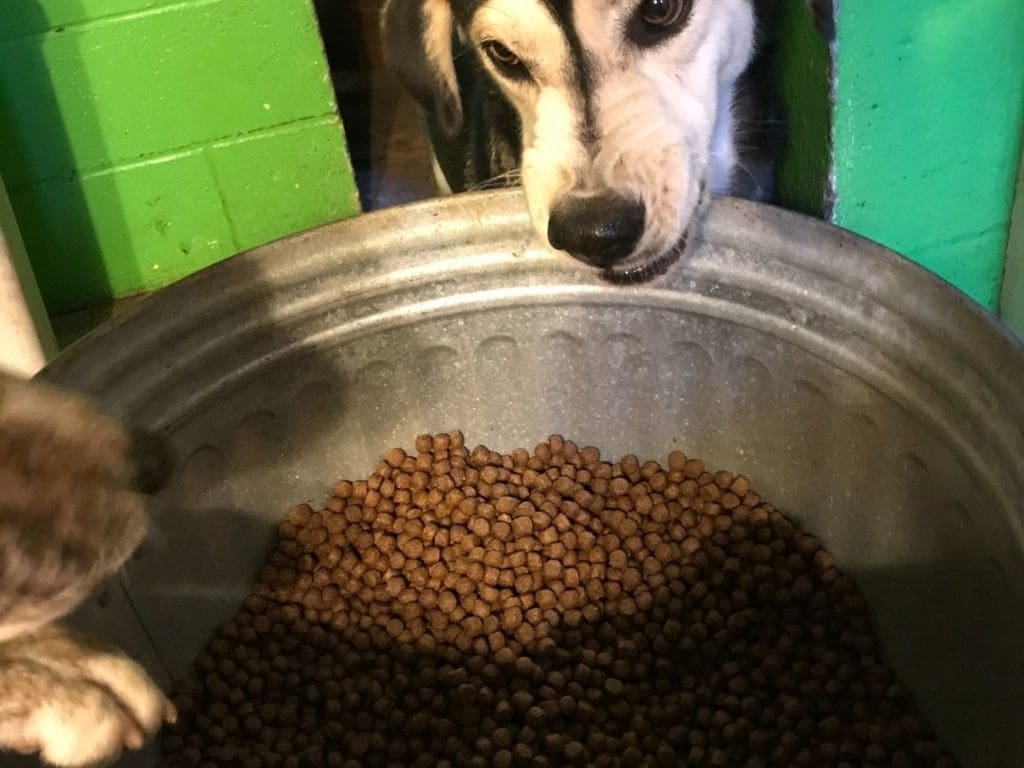
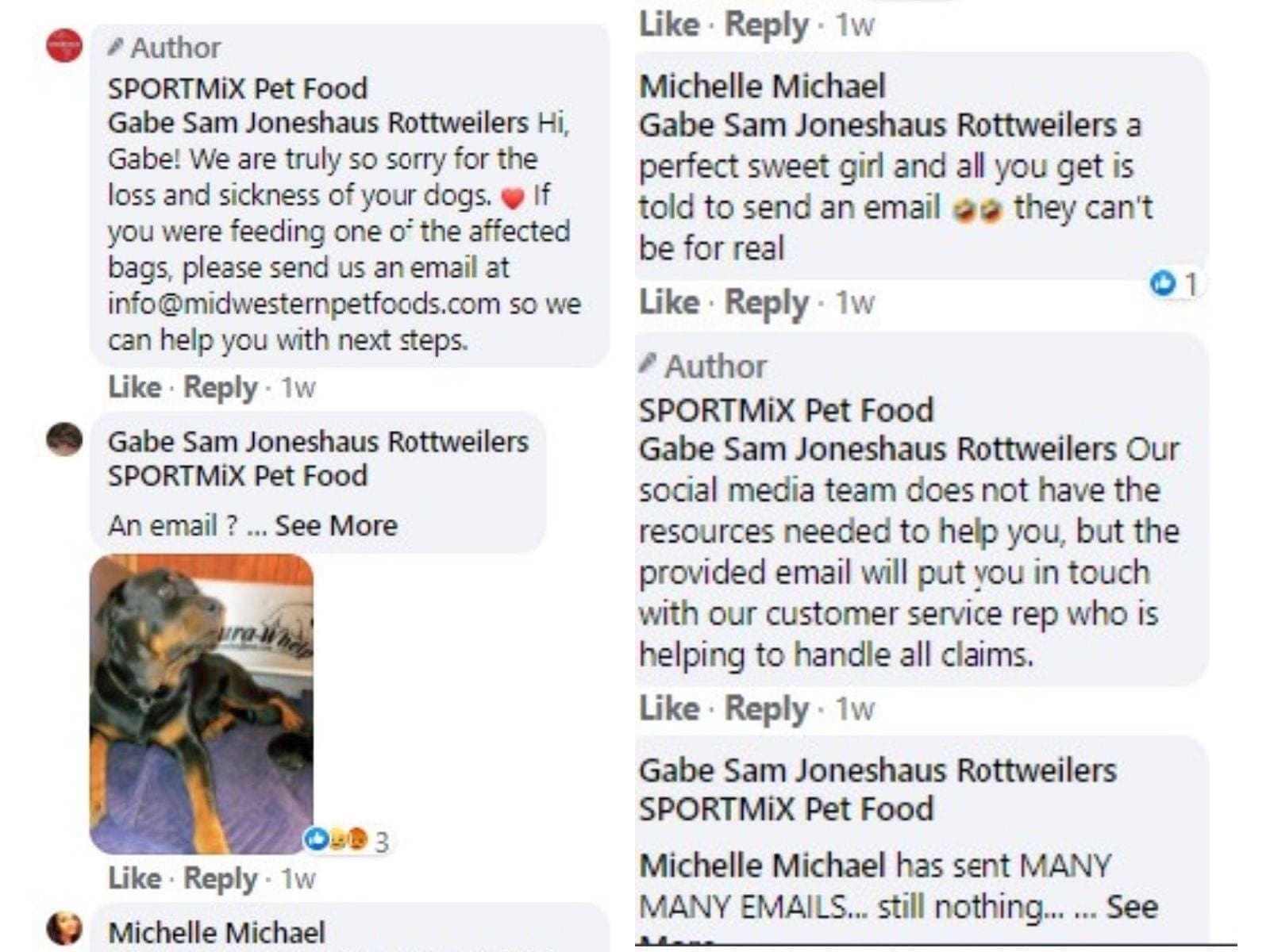
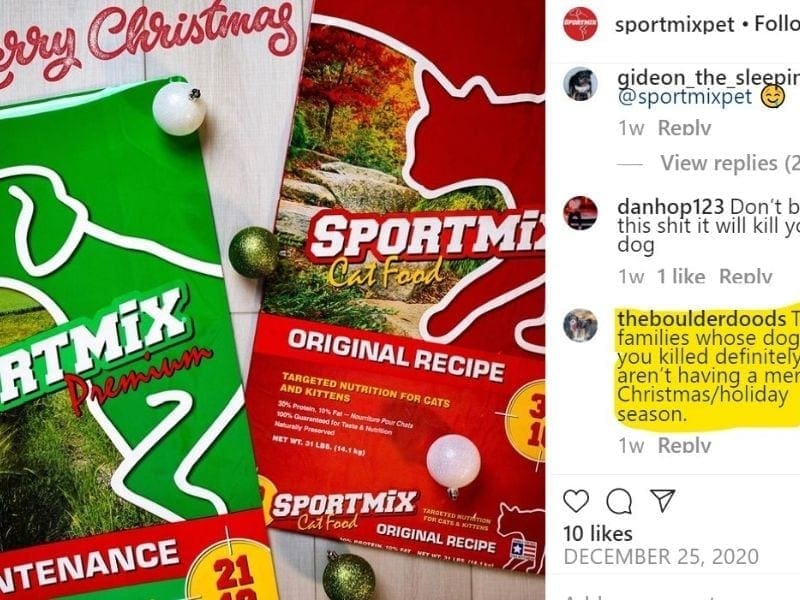
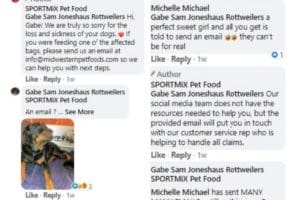













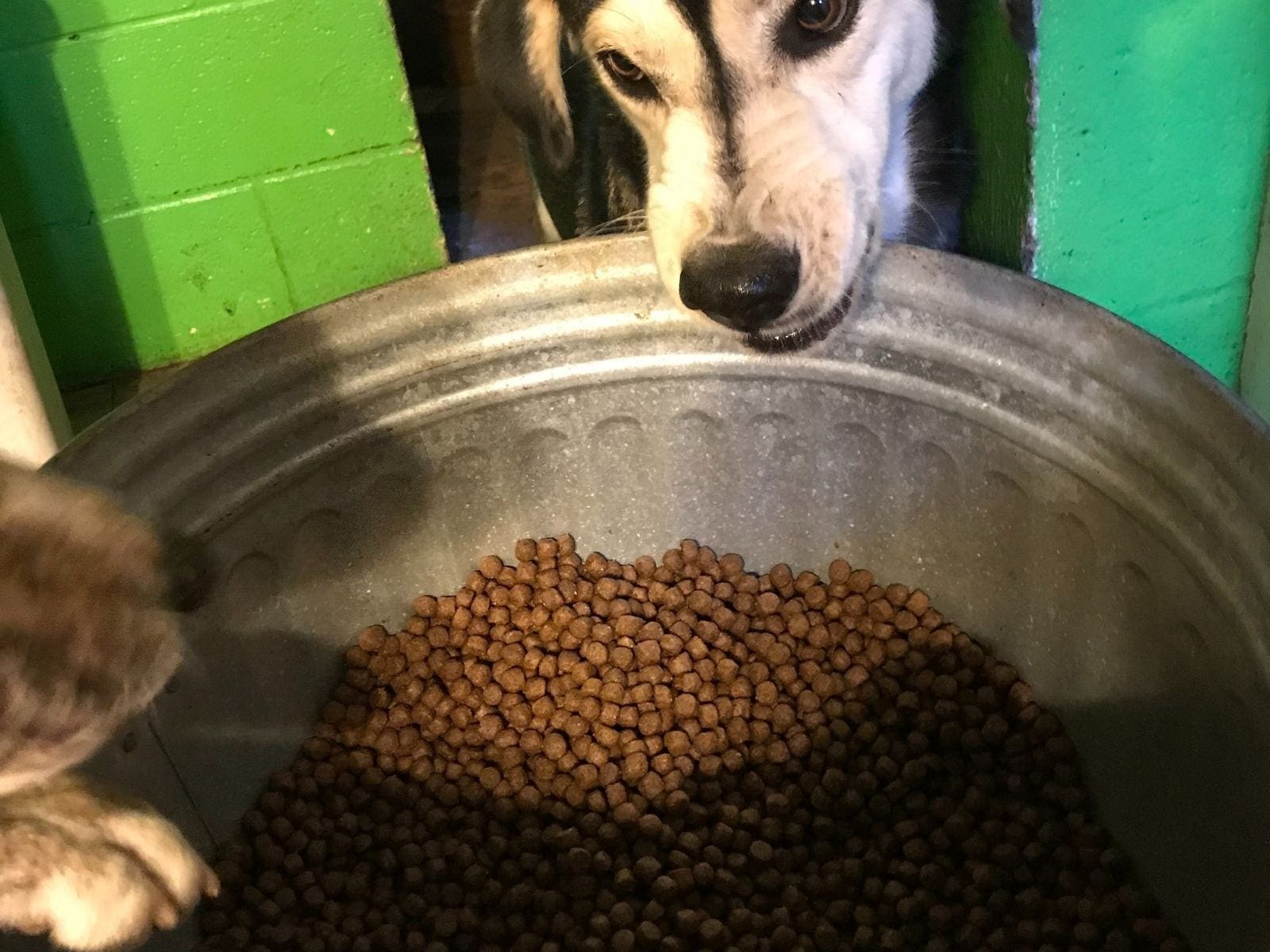















Pet Food Related Aflatoxicosis: What You Need to Know - The Animal Medical Center
January 27, 2021 @ 8:00 am
[…] is an ongoing pet food recall for aflatoxin contamination. The Canine Review (TCR) has interviewed a number of dog owners whose dogs tragically died from eating the recalled food. […]